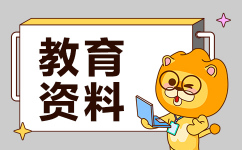下面是小编整理的七年级英语上册句型总结4篇,希望大家喜欢。
七年级英语上册句型总结1
1.现在进行时的结构
主语+be(am/is/are)+v+ing+其他。
否定句:在be后加not.
疑问句:把be提前。
2.want to do sth,想做某事;
want sb to sth,想让某人做某事;
want to be a/an…想当一个…;
3.let sb do sth.make sb do sth.
让某人做某事;
3.be good at,擅长……
be good at doing sth.
擅长做某事;
4.Thanks for sth,谢谢某物;
thanks for doing sth.谢谢做某事;
5.enjoy doing sth.喜欢做某事;
love to do sth,love doing sth.
喜欢做某事;
like to do sth,like doing sth,
喜欢做某事;
6.look at sb doing sth.
7.stop doing sth.停止做某事;(正在做的事)
stop to do sth.停下来去做另一件事;
8.remember to do sth.(记着去做某事,未做)remember doing sth.(记着做过某事,已做)
9.try to do sth,“尽力做某事”,
try not to do sth,“尽力不做某事”
10.help sb do sth,
help sb to do sth,
help sb with sth.帮助某人做某事,
11.It’s+adj.+to do sth.
It’s+adj.+doing sth.做某事是……的。
12.It takes sb time to do sth.
做某事花费某人……时间。
13.sb spend time doing sth.
某人花费……时间做某事;
14.feel happy,feel thirsty,feel well,
feel sad.feel+adj.
look cool,look young,look+adj.
sound interesting,sound boring,
31.提建议的方法:
What about doing sth?
How about doing sth?
Why not do sth?=Why don’t you do sth?
Let’s do sth.
Would you like to do sth?
32.It’s time to do sth.
It’s time for sth.
“到了该做某事的时候了”
It’s time for sb to do sth.
“到了某人该做某事的时候了”
33.have a good time,have fun,
enjoy oneself.玩的开心;
have fun doing sth.做……开心;
34.decide to do sth,决定做某事;
35.find sb doing sth.发现某人正在做某事;
36.have sth for lunch/dinner.晚饭吃……
37.ask sb about sth,询问某人关于某事;
ask sb sth,询问某人某事;
ask sb to do sth.让某人做某事;
ask sb not to do sth.让某人不做某事;
38.What do you think of sb/sth?
How do you like sb/sth?
你认为……怎么样?
39.mind doing sth.介意做某事;
40.show sb sth,show sth to sb.
给某人看某物;
give sb sth,give sth to sb.
给某人某物;
41.bring sb sth,bring sth tosb.
给某人拿来某物;
buy sb sth,buy sth for sb.
买某物给某人;
42.arrive late for school/class.
上课迟到;
43.be late for school/class.
上课迟到;
44.what else,别的什么;
who else,还有谁;别的什么人;
where else.别的什么地方;
is Mary.她叫玛丽.
4.Nice to meet you!见到你真快乐.Nice to meet you too.见到你也很快乐.
5.What,s your telephone number?你的是什么?(对提问用what)Unit 2.
1.Excuse me.打搅了.Is this/that your pencil?这个/那个是
你的铅笔吗?
Yes,is./No,it isn't.是的,它是./不,不是.〔答复时常用it替代上文中的this和that〕
2.This/That is my ruler.这个/那个是我的尺子.
3.Please call Mary at 495-3539.请给Mary打:495-3539.〔call sb at+〕Please call Mary.请给Mary打.Please call 495-3539.请拨打
495-3539.
4.本单元短语:call sb at+〔at译为“根据〞,此短语意思是“根据某个给某人打〕pencil case文具盒computer game电脑游戏lost and found失物招领lost and found case失物招领箱
Unit 3.
1.This/That is my sister.这位/那位是我的姐姐.此句的复数形式是:These/Those are my sisters.这些/那些是我的姐姐们.〔this/that的复数分别是these/those〕
2.is a watch.复数形式是:They are some watches.〔he/she/it复数都是they,和this/that的复数不同〕
3.Is he/Guo Peng your brother?他/郭鹏是你的哥哥吗?
Yes,he is./No,he isn't.是的,他是./不,他不是.
4.Thanks for the photo of your family.感你寄来你的家庭照〔全家福〕.句中thanks=thank you,另外the photo of your family=your family photo
5.Here is my family photo.这儿是我的家庭照.Here are some books.这儿有一些书.
There is a picture and three pencils on the desk.桌子上有一幅画和三支铅笔.
There are many photos in the drawer.抽屉里有许多照片.
〔here/there后的be动词单复数形式要以紧随其后的名词单复数来定〕Unit 4.
1.Where is my backpack?我的背包在哪儿?Where are the books?那些书
在哪儿?
2.It's/They're in the drawer/under the bed/on the bookcase.它/它由\在抽屉里/床底下/书柜上.〔注意主语和be动词照应〕
3.Is it/Is the book/Are they on the bed/in the backpack/under the des依
它/这本书/它们在冰上/背包里/某弄R吗?
4.Can you bring some things to school?你能带些东西去学校吗?some一般用在肯定的述句中,any用在否认句〔“任何〞〕或疑问句〔“某些,一些〞〕中.但如果表示期待对方肯定的答复或表请求和建议,疑问句中常用some.如上句.
5.take,•,to…把…带到…Please take your sister to school.请把
你的妹妹带到学校.
bring表从另一处带到这儿.take表从这儿带到另一处.方向正好相反.
Unit 5.
1.Do you have a soccer ball?你有一个足球吗?Yes,I do./No,I don*t.Does she have a tennis racket?她有一个网球拍吗?Yes,she does./No,she doesn't.
〔谓语是实义动词的时候,疑问句形式:do/does提前到主语前,主语后面的动词用原形〕
2.I don't have a soccer ball.我没有一个足球.She doesn't have a volleyball.她没有排球.
〔谓语是实义动词的时候,否认形式:do/does+not+动词原形〕
3.Let me/him/us play soccer.让我/他/我们踢足球吧.〔let后面的动词用原形〕
4.That sounds good/great/interesting/boring.那听起来不错/好极7/有趣/无聊.〔that指代上文之事〕
5.I/We/They/You/The kids have 8 baseballs.我/我们/他们/孩子们有8个棒球.
She/He/My brother/The boy has 8 baseballs.她/他/我哥哥/那个男孩有8个棒球.
〔注意以上各句主语和谓语的照应:主语是单三,谓语也用单三;主语不是单三,谓语也不用单三.〕
6.本单元短语:tennis racket网球拍ping-pong bat乒乓球拍ping-pong/soccer/tennis ball乒乓球/足球/网球〔指物品〕play tennis/basketball/baseball/ping-pong/volleyball/soccer/football“打…,踢…〞〔指运动〕
6.短语:learn about…学习有关…的知识Chinese history中国历史
on weekends.在周末action movies动作片go to a
movie去看电影want to do sth.想要做某事
7.语法:并列连词and和or.都译为“和“,〞常用于否认句.and常用于肯定句.
He likes P.E.and art.他喜欢体育和美术.=He likes P.E.and he likes art.
He doesn't like P.E.or art.=He doesn,t like P.E.and he doesn,t like art.
〔or只用于连接否认句中的短语.假设连接两个否认句时仍用and,如后一句.〕Unit 10.
1.Can you play the guitar?Can you dance/swim?你会弹吉它/跳舞/游泳吗?
Yes,I can./No,I can't.是的,我会./不,我不会.
2.I want to join the art/music club.我想参加美术/音乐俱乐部.
3.What club do you want to join?你想参加什么俱乐部?
4.Can you play the piano well?你弹钢琴弹得好吗?
5.Are you good with kids?你善于和孩子相处吗?〔be good with sb.善
于和某人相处〕
6.May I know your name?我可以知道你的名字吗?=What,s your name?
7.What can you do?你会做什么?
8.短语:play the piano/the drums/the trumpet弹钢琴/打鼓/吹喇叭〔乐器前有the〕
chess/English/swimming/music…club象棋/英语/游泳/音乐俱乐部
a little"一点,一些“〔修饰不可数名词.〕
Unit 11.
1.What time do you/does she usually go to school/get up?你通常何时上学/起床?
I usually run/She usually gets up at around 7:00.我/她通常大约7:00跑步/起床.
2.When do people usually eat dinner?人们通常什么时候吃晚饭?
3.短语:in the morning/afternoon/evening在早上/下午/晚上〔用介词in〕
〔假设有其它修饰词,常用介词on:on Sunday morning;on the evening of May V\〕
go home回家get home到家go to bed上床睡觉take a
shower洗澡get up起床best wishes致以良好的祝愿listen to
music/me听音乐/听我〔说〕all day and all night整天整夜
brush teeth刷牙take the No.305 bus to school乘305路车去学校write a letter to sb=write to sb=write sb.给某人写信
4.时刻表达:①分钟未过半点;7:20,可以读作:seven twenty,或twenty past seven
12:08,可以读作:twelve oh eight,或eight past twelve
②分钟刚好半点:9:30,可读作:nine thirty,或half past nine
③分钟超过半点:8:46,可读作:eight forty-six,或
fourteen to nine
5.what引导的感慨句的结构:①what+a/an+形容词+名词+主谓
What a clever boy he is!他是多么聪明的孩子啊!
What an interesting book you have!你的书多么有趣啊!
②what+形容词+名词复数:What clever boys you are!你们是多么聪明的孩子啊!
③what+形容词+不可数名词:What difficult work it is!那是多么困难的工作啊!
6.宾语从句的语序〔用述句的语序,见下文画线局部〕:

